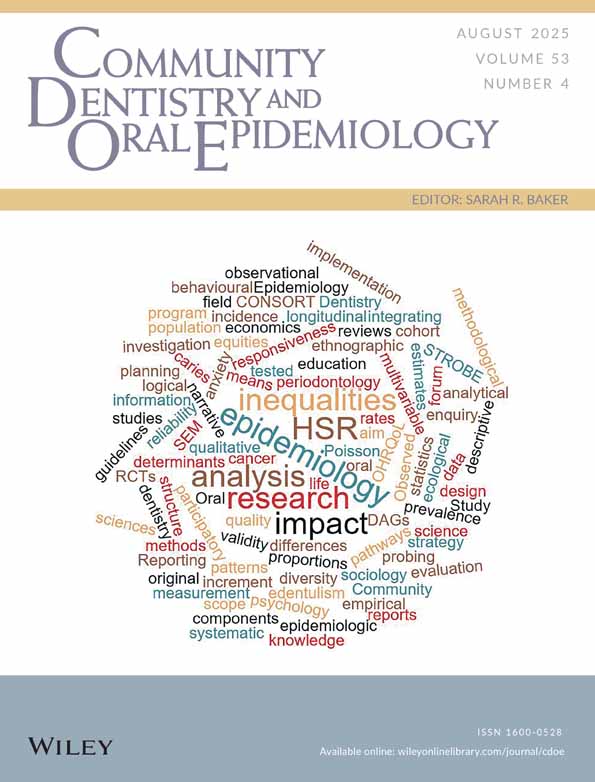Development of clinical practice guidelines for dentists: methods for topic selection
Abstract
Abstract –
Objectives: The aim of this study was to compare four methods for assessing the preferences of the dental profession for topics to be considered for the development of clinical practice guidelines.
Methods: The methods were: (1) a survey among dentists, (2) an analysis of topics discussed in dental peer groups, and (3) screening of dental journals. A fourth method was obtained from method number 3. The frequencies of the reported topics were calculated for each of the methods. For the fourth method, the number of publications per topic were plotted against the year of publication, and the slope of the linear regression line was used as an indicator. Within each of the four methods, the topics were ranked according to the frequency in which they were reported, and to the slope value. The reliability of the methods was tested by the “item-rest sum correlation”, which is the correlation of the rank positions of one method with the sum of the rank positions obtained by the remaining three methods.
Results: In using all methods, a total of 1027 topics were obtained. Reclassification resulted in 34 topics. Moderate item-rest sum correlations ranging from 0.34 to 0.48 were found for all methods, indicating that the rank order of every method moderately predicts the sum of the rank orders obtained by all other methods. The topic ‘prevention of cross-infection’ had the highest overall rank position.
Conclusion: It is concluded that the four applied methods appeared to provide a consistent ranking of potential topics. In view of the fact that the questionnaire method is generally applicable, this method should be preferred for assessing dentists' preferences for topics to be considered for the development of clinical practice guidelines.




